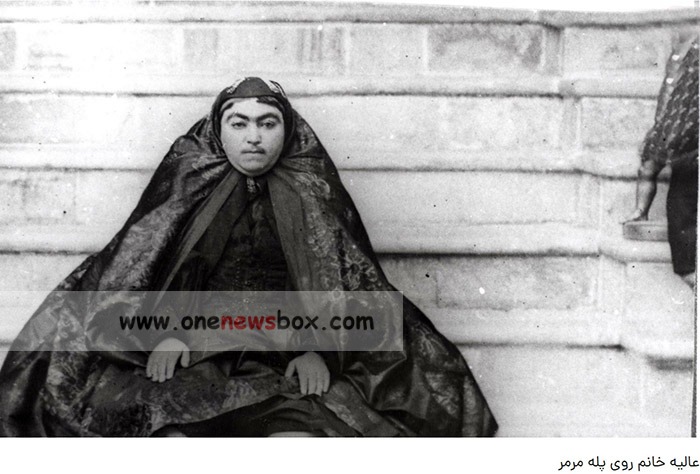The Marble Staircase: A Favorite Setting
Among the many locations in the Soltanabad Mansion, the Marble Staircase held a special allure for Naser al-Din Shah. This staircase, with its majestic design and natural light, provided the perfect backdrop for his photography. The interplay of light and shadow on the marble surface enhanced the visual appeal of the compositions, creating a dramatic yet elegant setting.
The Shah’s photographs of his wives and harem members on the Marble Staircase reveal his meticulous attention to detail. He carefully arranged his subjects, often instructing them on their poses and expressions. The resulting images were a blend of artistry and intimacy, capturing not only the physical beauty of the women but also the grandeur of the setting.
The women were often depicted wearing elaborate Qajar attire, complete with richly embroidered fabrics, jewelry, and distinctive hairstyles. These photographs served not only as personal mementos for the Shah but also as a testament to the cultural and aesthetic values of the Qajar era.
Symbolism and Legacy
The Shah’s choice of the Marble Staircase as a favorite setting for his photographs was likely influenced by more than just its visual appeal. The staircase, as a transitional space between different levels of the palace, symbolized elevation and aspiration. By positioning the women of his court on this grand staircase, the Shah may have been expressing their elevated status within his personal and political life.

